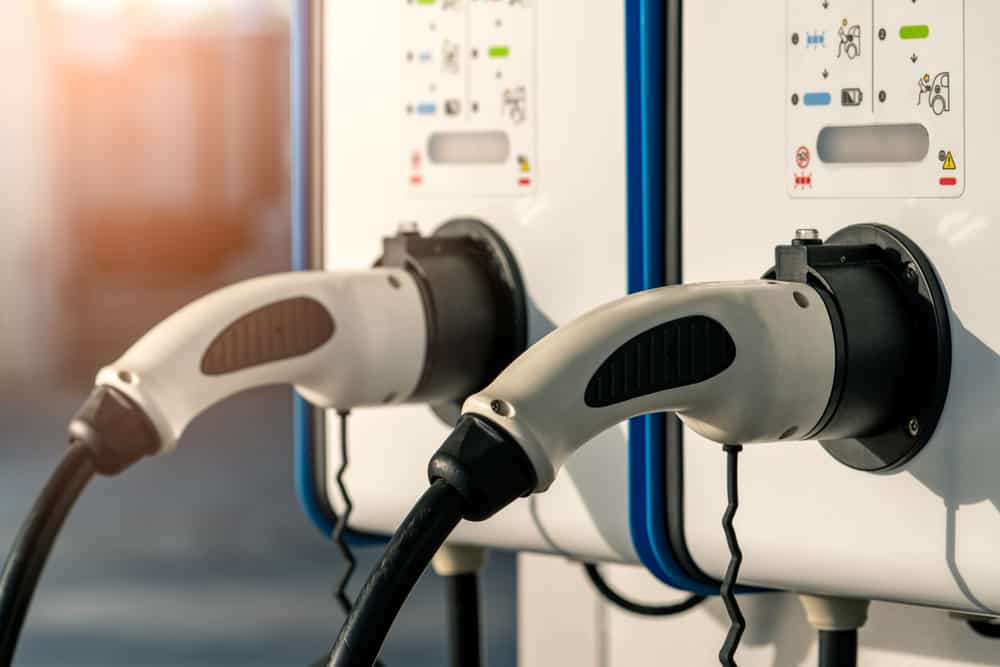In a move to prepare campgrounds and other hospitality companies for the shift to electric vehicles (EV), California Outdoor Hospitality Association (CALOHA) and Livingston Energy Group recently led a webinar discussing things to consider when building EV charging stations.
Dyana Kelley, president and CEO of CALOHA, hosted the webinar “The EV Revolution with Livingston Energy” with the group’s Will DeRuve as the event’s speaker.
DeRuve said that EV charging stations will always be part of any campground’s brand as people will always expect sites to have charging stations or any facilities to accommodate EVs.
In the talk, they showed that EV charging is done in public, specifically at airports, state parks, and grocery stores. EV drivers mostly do public charging when they are on long trips and when charging at home is unavailable.
However, 70% to 80% of EV drivers still mostly do the charging at home or the workplace, charging it overnight and doing it daily or every two days.
DeRuve said the ideal place for installing EV charging stations are at hotels and other lodgings, like parks and campgrounds, as well as at attractions, near dining areas, and supermarkets.
He said these locations are ideal because EV owners like to seek entertainment or do errands while charging, adding that parks are perfect for this task since it has amenities to keep the owners busy while their EVs are charging.
EV charging solutions available for parks
DeRuve presented in the webinar the different types of charging solutions that park owners can build in their campgrounds.
He said there are three types of charging for EVs. Level 1 charging, which is mostly home charging and takes about 17-25 hours of charging with a maximum kilowatt (kW) of 1.4. This type is cheap since it is done at home.
Level 2 charging can be built both at home and in public. It has a faster charging time of three to eight hours, with 2.8kW to 19.2kW. While Level 3 DCFC or direct current fast charging has the fastest charging time but is also the most expensive. It can charge an EV with 50kW-350kW in 20-60 minutes.
Types of EVs
DeRuve also elaborated on the different types of EVs that may come into parks, such as hybrids, which are powered by an internal combustion engine in combination with one or more electric motors that use energy stored in batteries.
Plug-in hybrids are another type of EVs, using batteries to power an electric motor and another fuel, such as gasoline, to power an internal combustion engine.
The third type is a zero-emission vehicle, or ZEV, which is a vehicle that does not emit exhaust gas or other pollutants from the onboard source of power.
Why accommodate EVs now?
California already started the transition by banning the sales of new gas cars by 2035. As of the first quarter of this year, EV registrations in the state increased by 37%, which is 17.2% of the total market. The rise is already five times faster than 23 years ago, DeRuve said.
“The EVs are getting better and faster on a single charge. Every county and state has different incentives, encouraging people to shift to EVs,” he said.
He said park owners and other businesses could receive incentives and grants, depending on the county and state, for building charging stations. It assures businesses have the funds and benefits they need to develop this type of infrastructure. California even has a Compliance Offset Program to pay businesses back for the power the stations produce for EVs.
Livingston Energy Group also has a software application for the businesses that they build an EV chagring station for. Every charging station they build will have a QR code, allowing them to start the charging and transaction process.
The app can all provide data on how much revenue they make, how much electricity is used to charge, and the type of consumer using the station. The data will help owners to make interesting decisions to help improve their business.
What to consider before installing charging stations
DeRuve provided tips on what to consider before installing an EV charging station. He said park owners need to check the permit requirements for building one and ask a project manager for zoning specific of the area for possible issues.
Next, owners must research the possible incentives and grants in their county or state for installing an EV charging station, so they would know any benefits they could gain.
Lastly, prepare ongoing requirements and maintenance for the station. If they’ve been granted an incentive or grant, parks may be required to report data in the next five years, DeRuve said.
Once the station is on the ground, they need to find maintenance services.
DeRuve believes the industry and the world, in general, are “heading into one of the larger paradigm shifts” with EVs.
Since EVs will become part of a park’s brand, it is best to prepare for building the stations for the future of its business.



When it comes to EVs, it’s key to look into smart charging options. Cities and businesses should amp up charging spots for the growing EV fleet on our roads. Let’s stay charged up!
Isn’t it cool that most EV drivers charge at home or work daily? Parks offering charging stations are a neat idea. Smart solutions and renewables make our transport greener and smarter – so exciting!